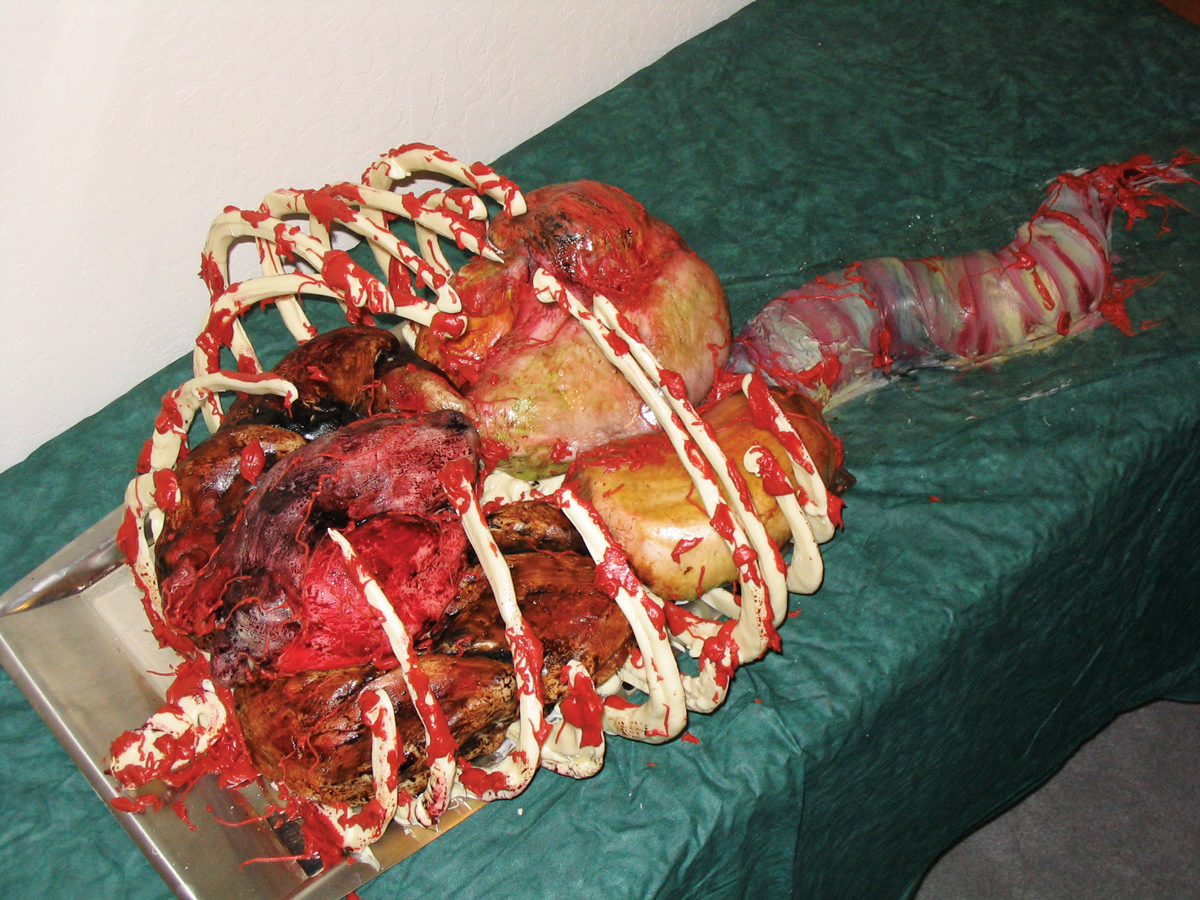
I make a bleeding heart cake for our annual pumpkin carving party. Sometimes the heart beats, sometimes it’s anatomically correct, always it bleeds fresh, homemade raspberry sauce.
This year I decided to go the whole hog and make an entire thoracic cavity cake. Each organ was a different kind of cake, and secreted a different color of fluid when cut into: raspberry, strawberry, mango, and blueberry sauces. The heart bled pretty well, but the other fluids weren’t so dramatic. On the bright side, they were all delicious.
















